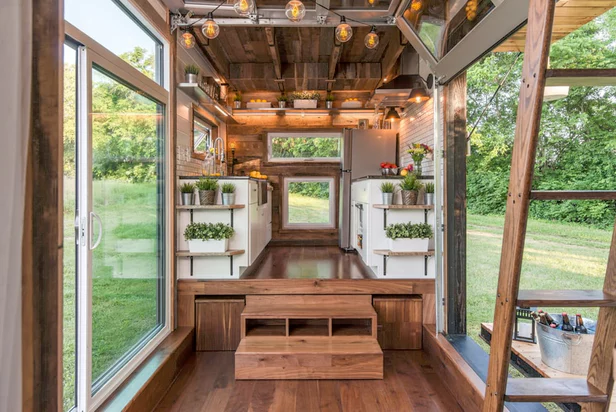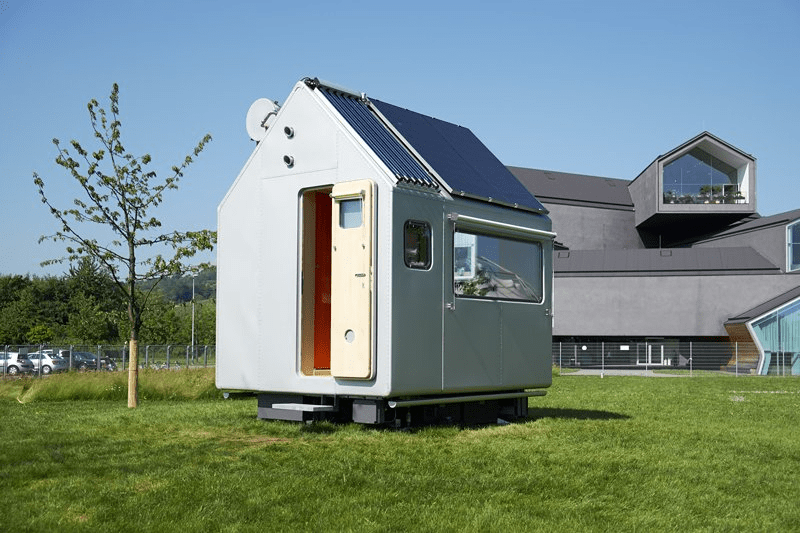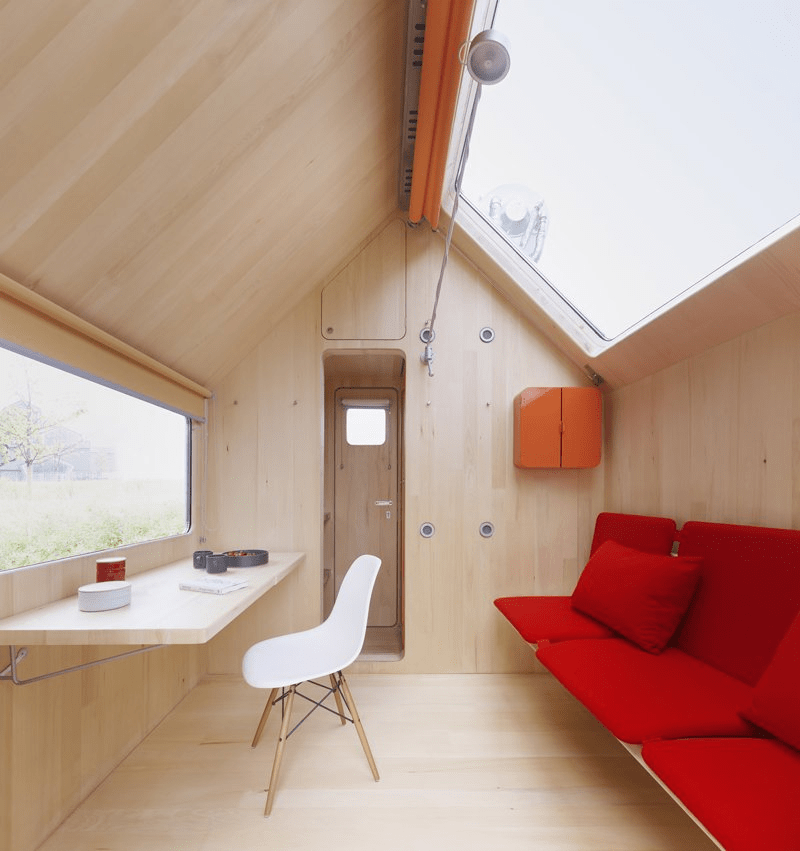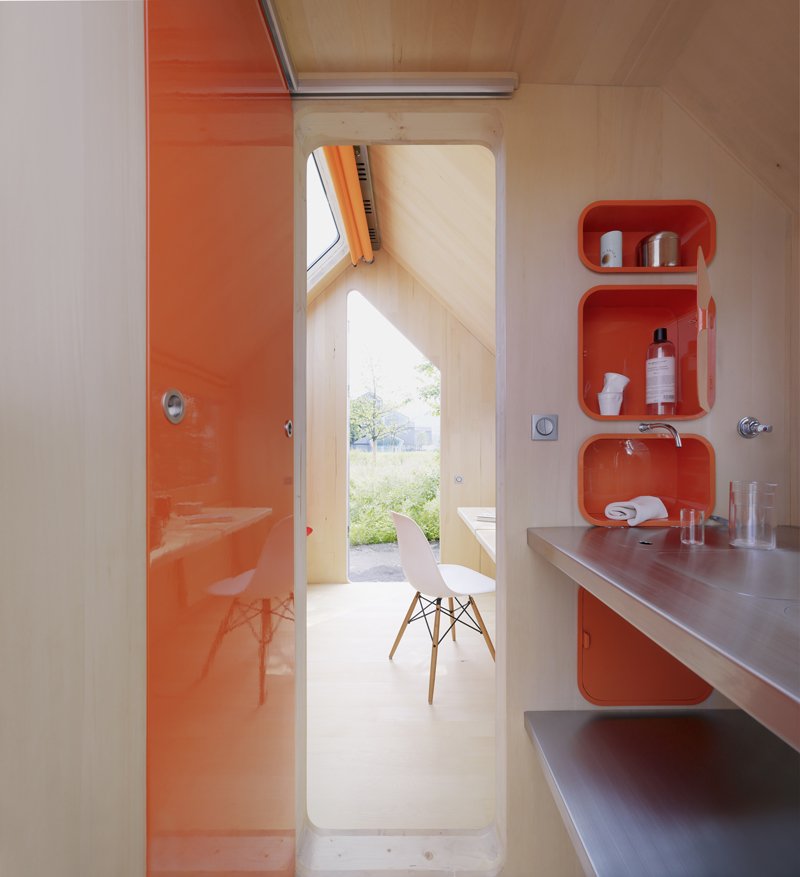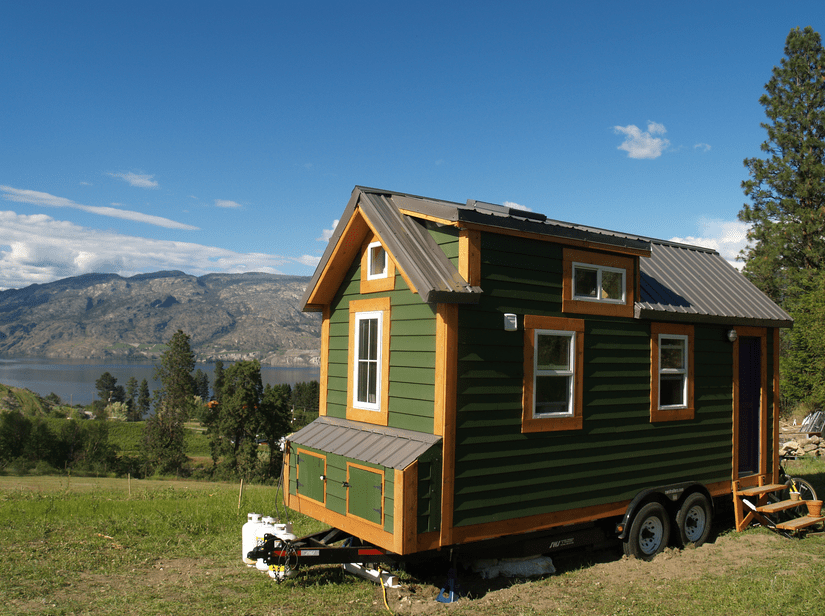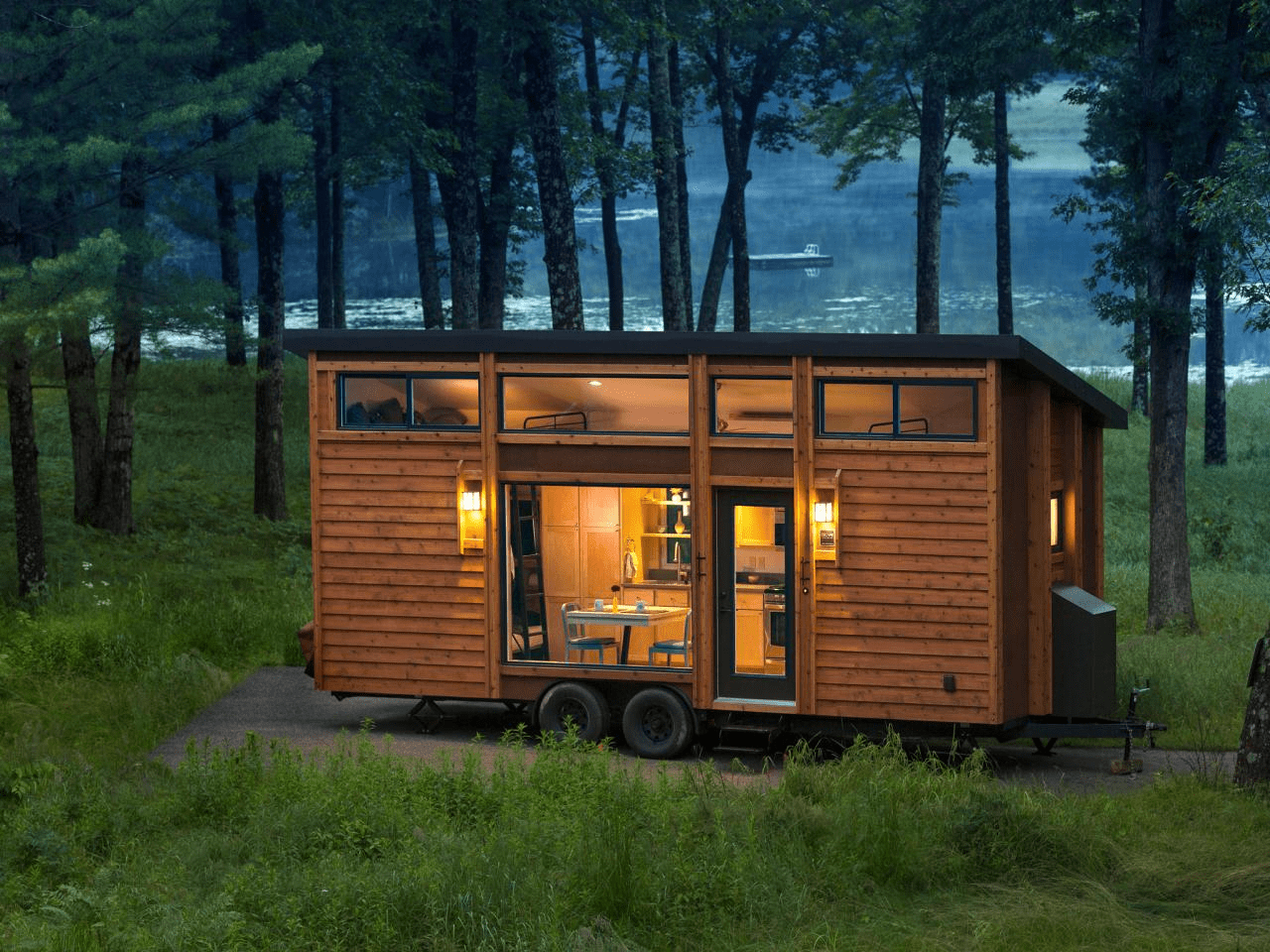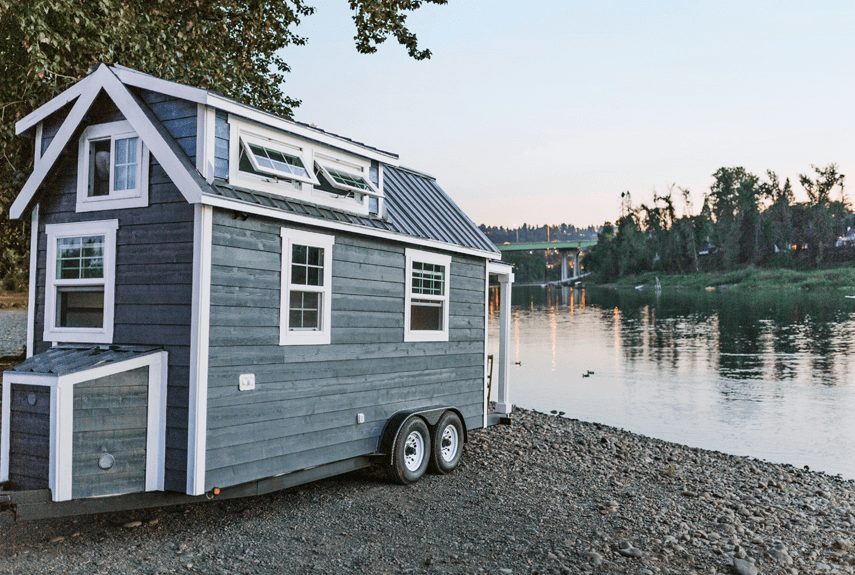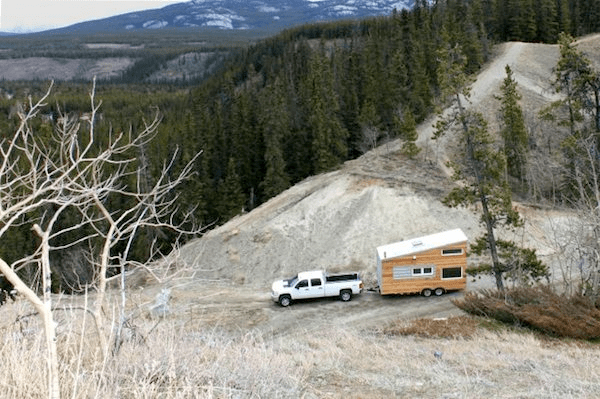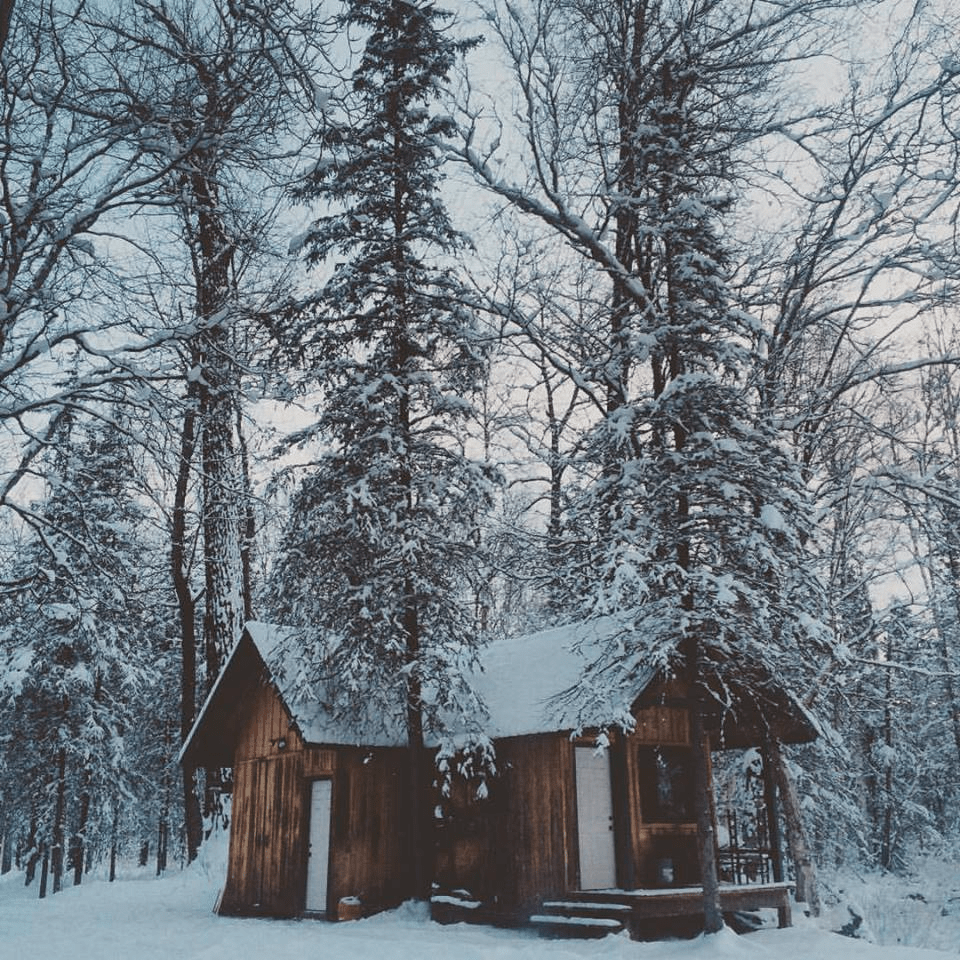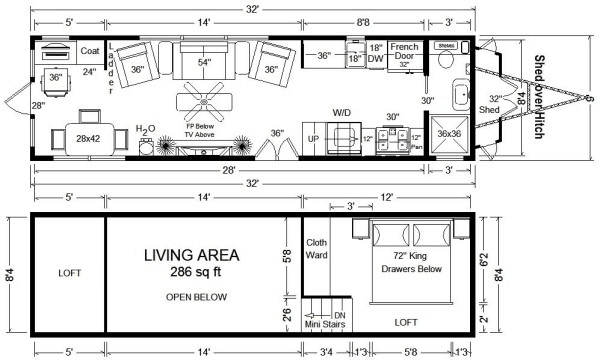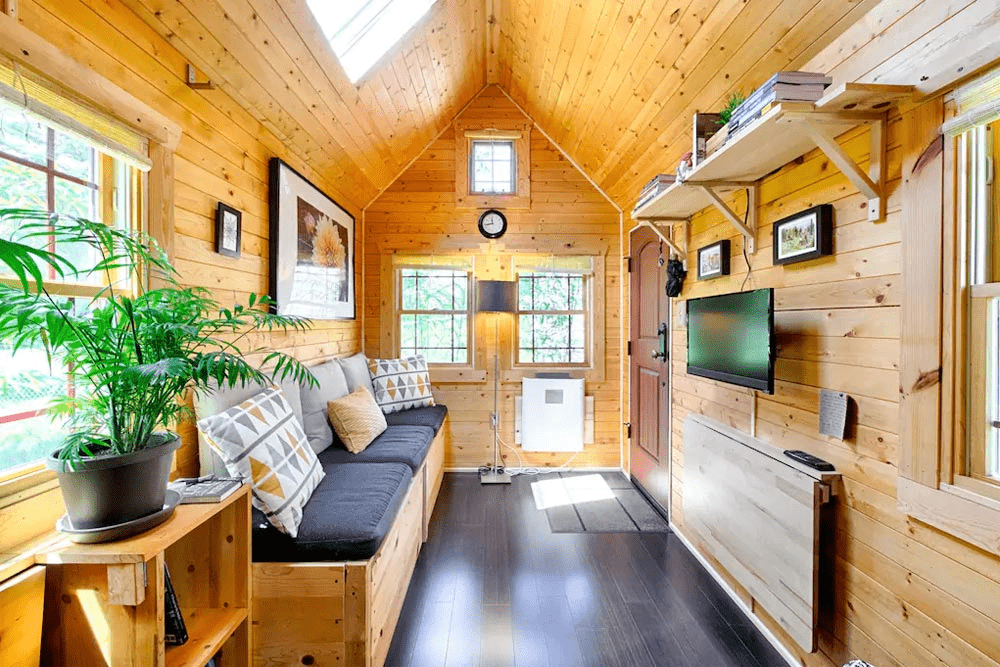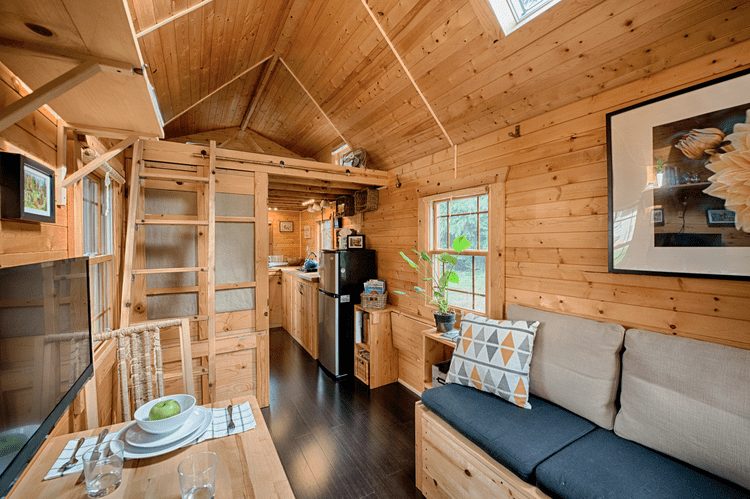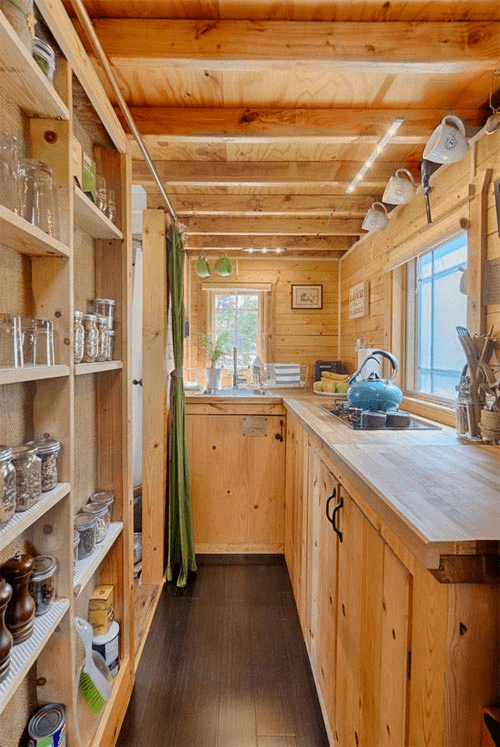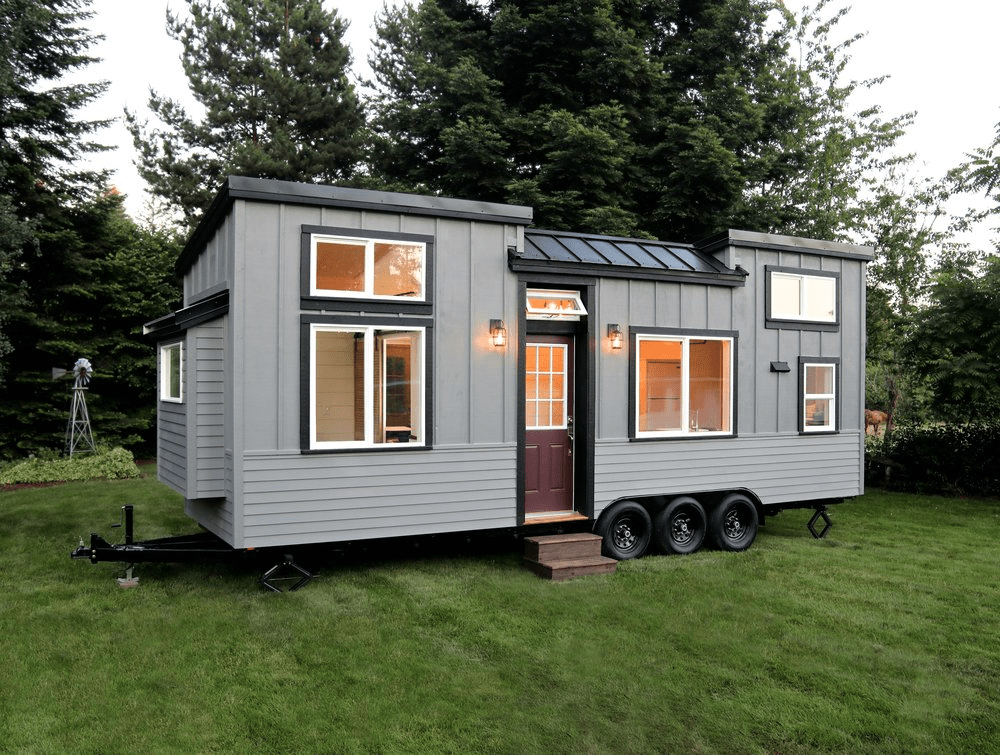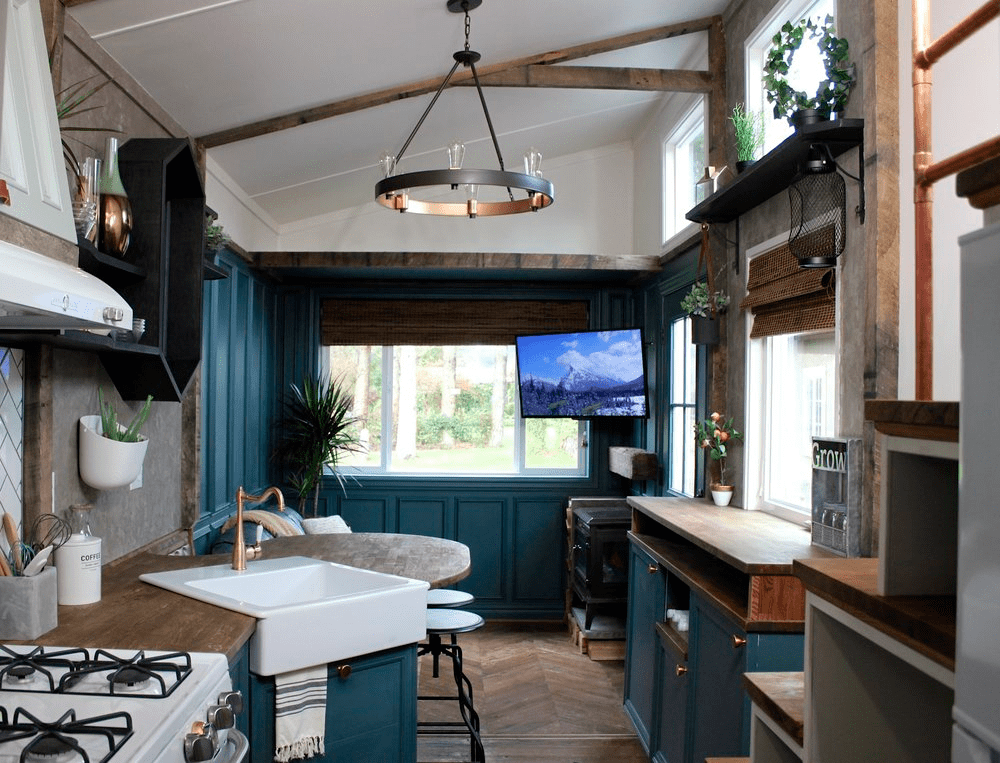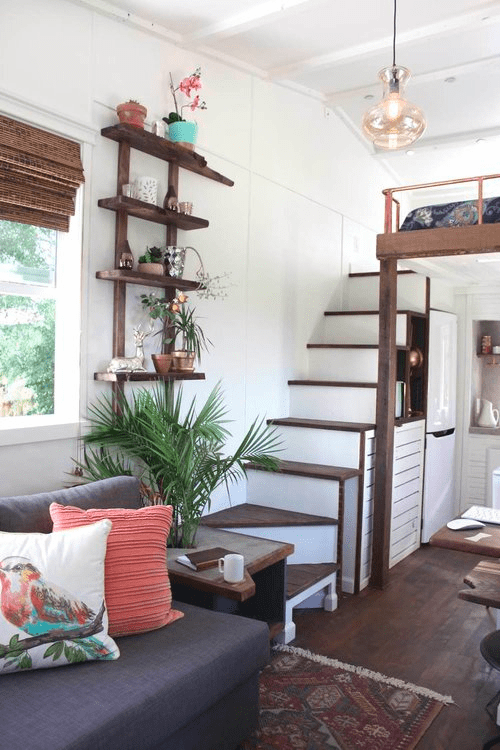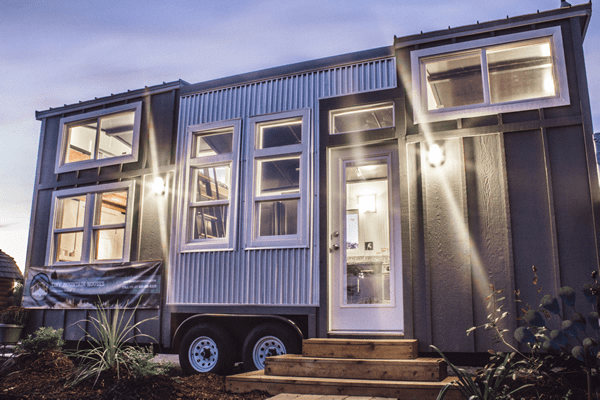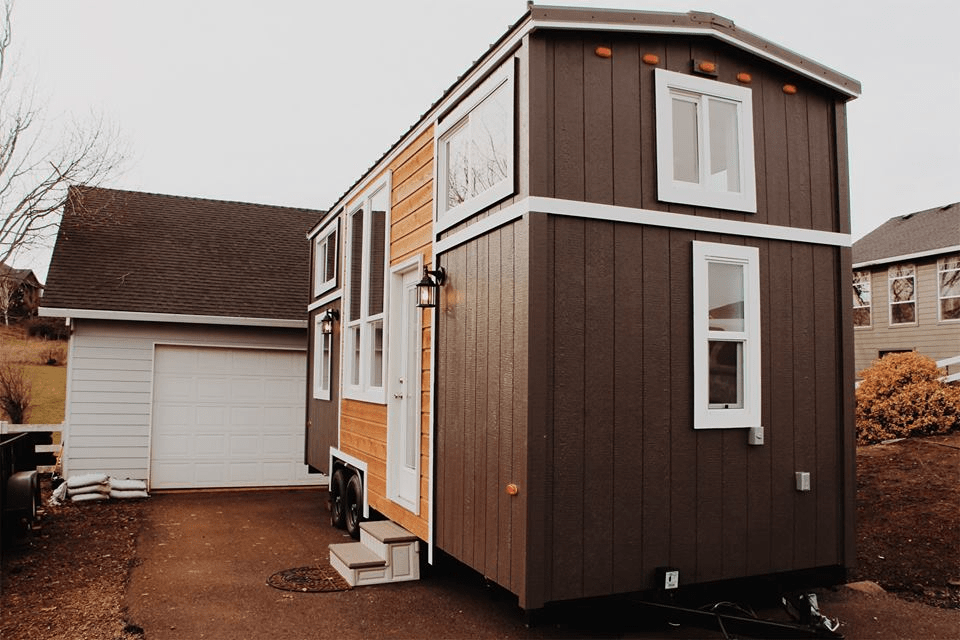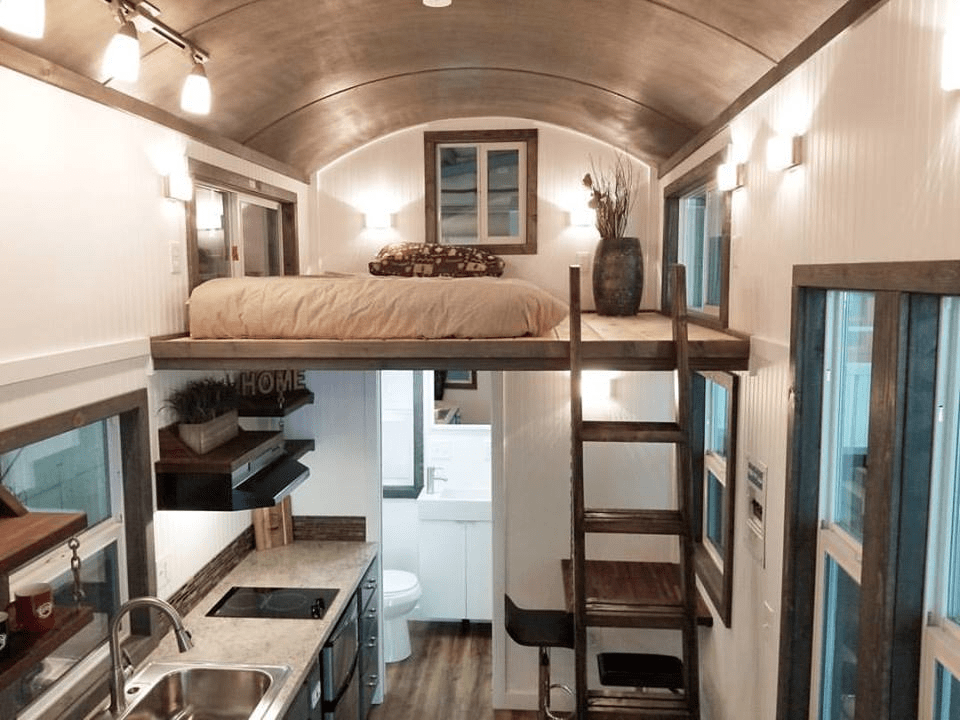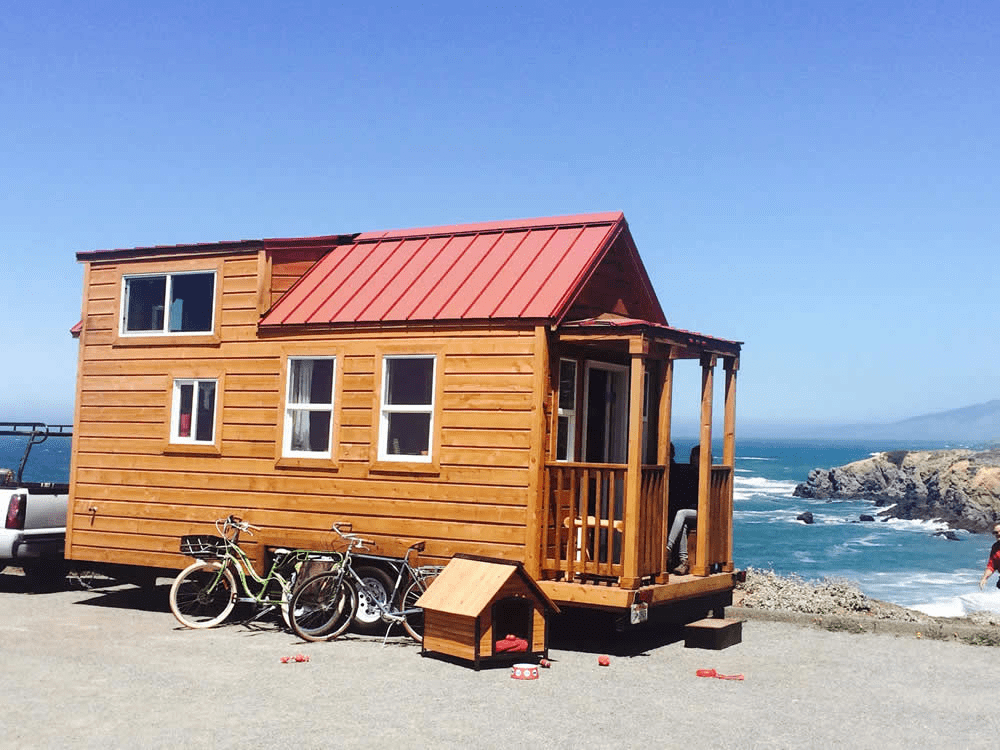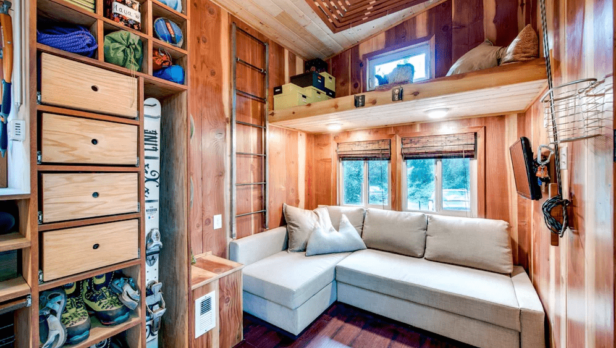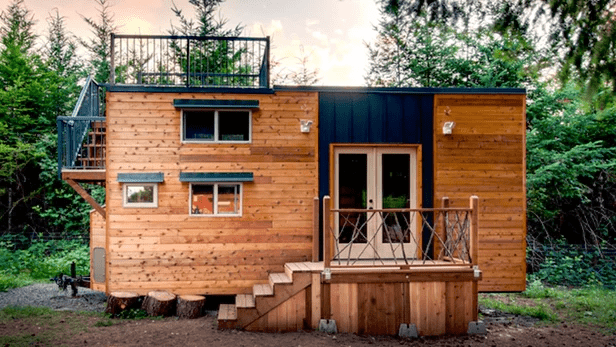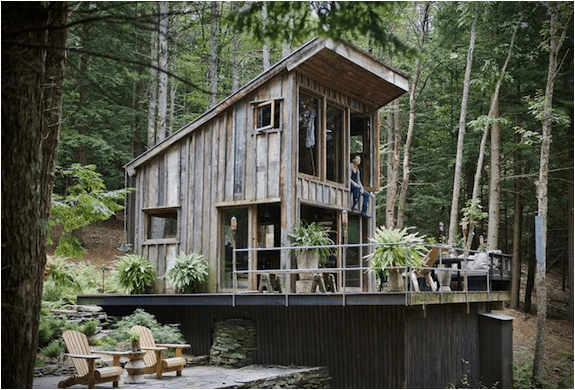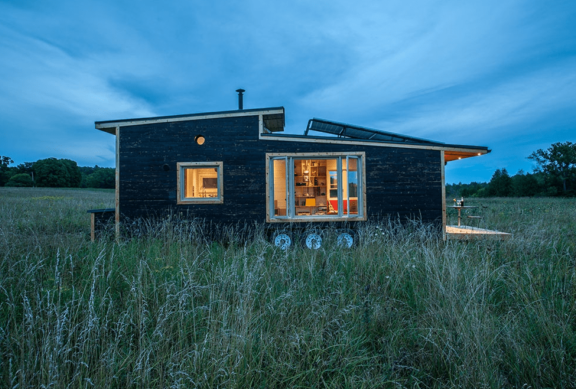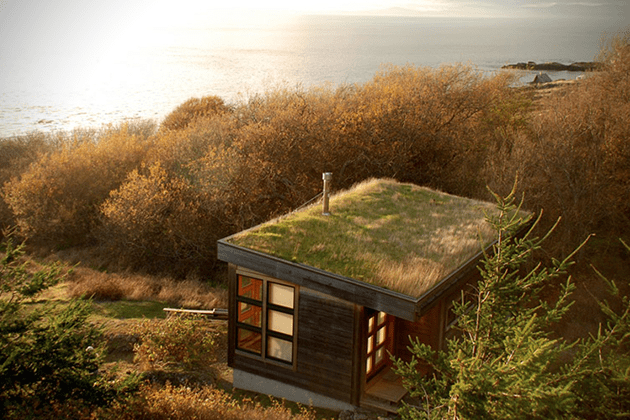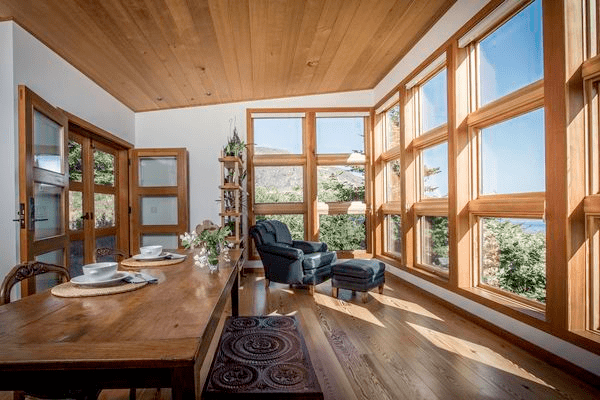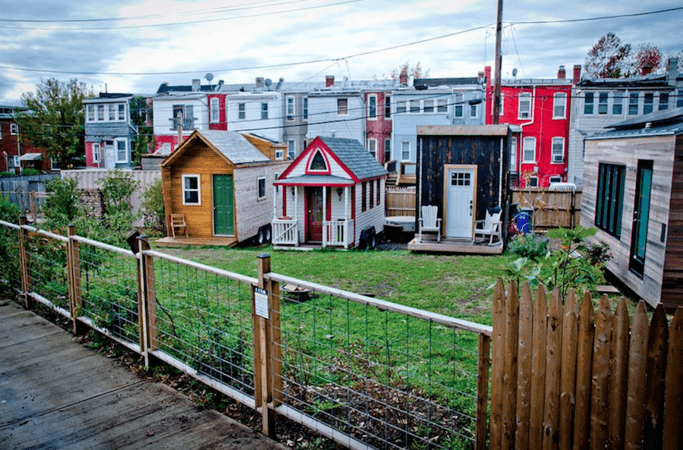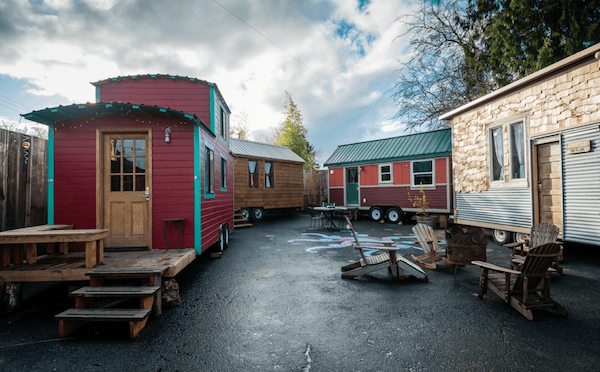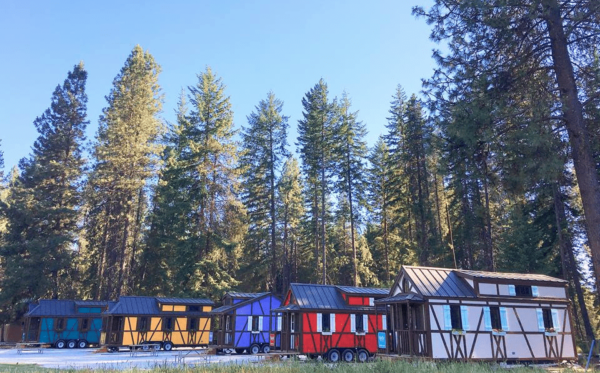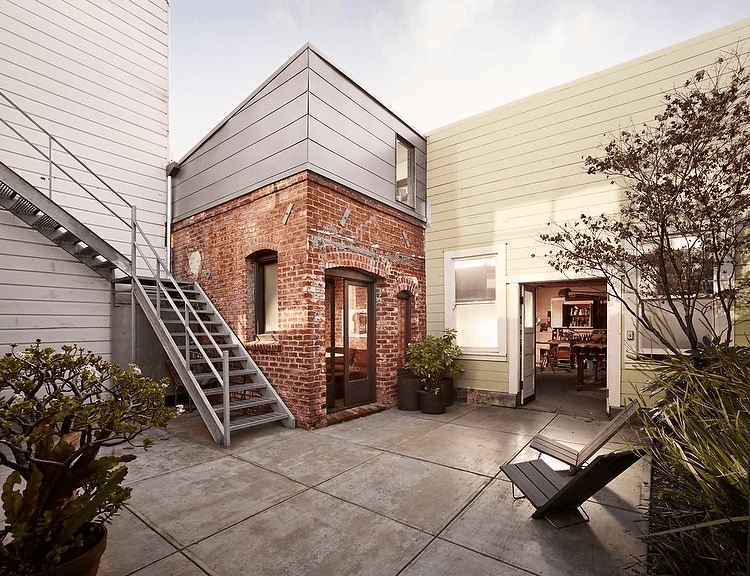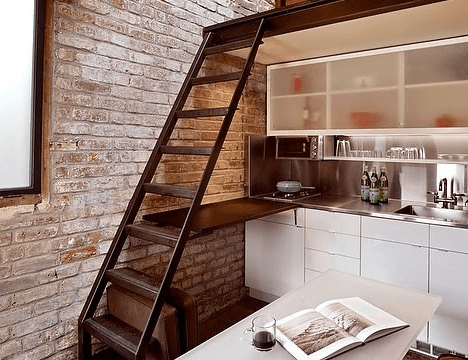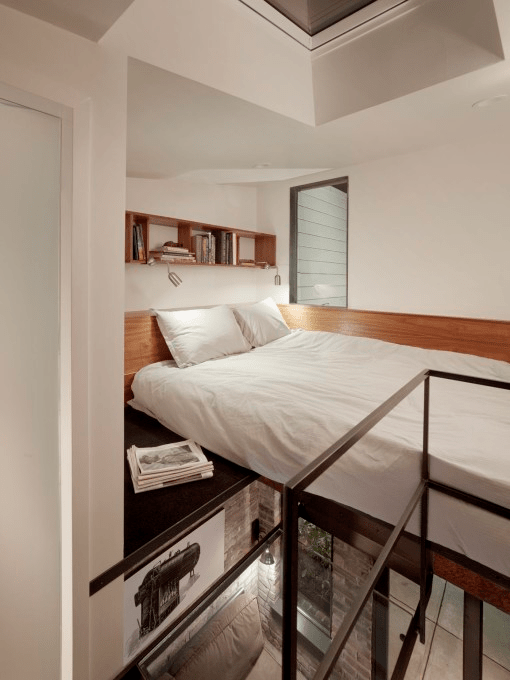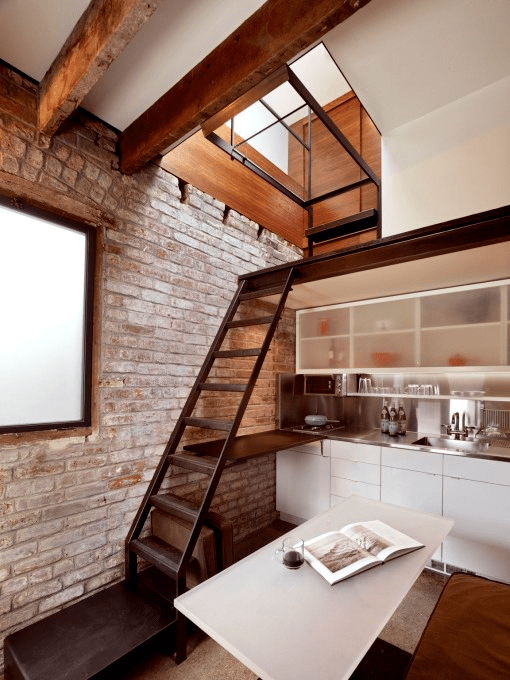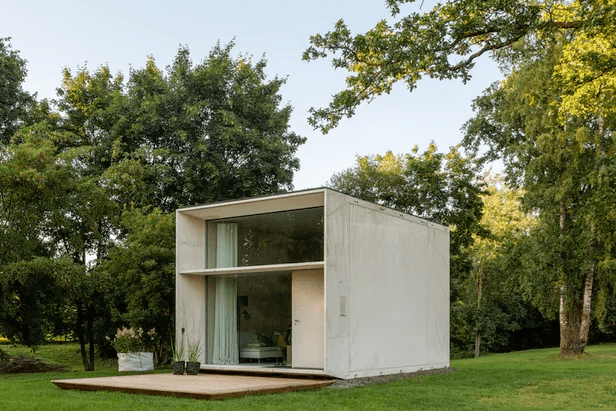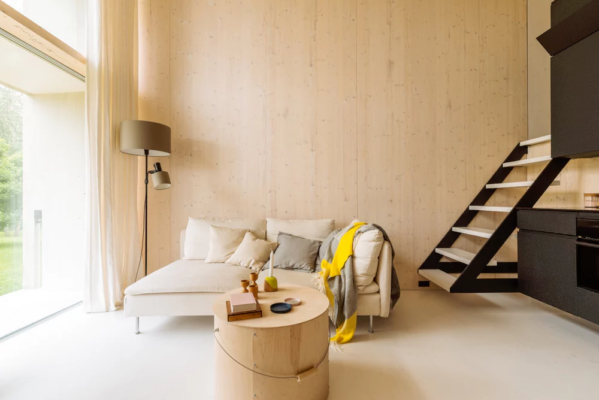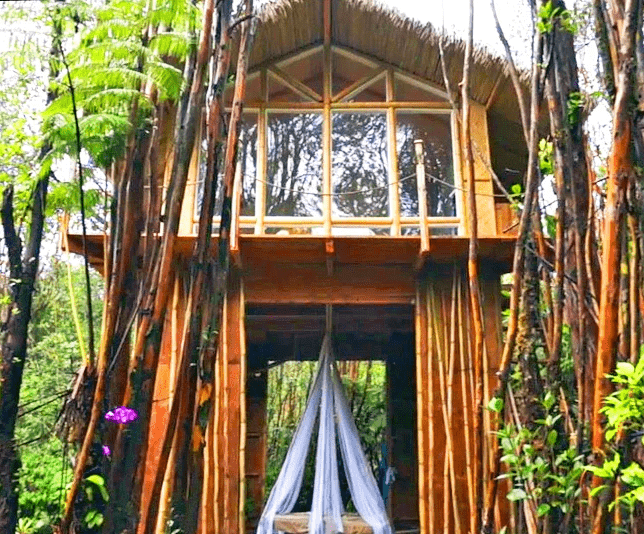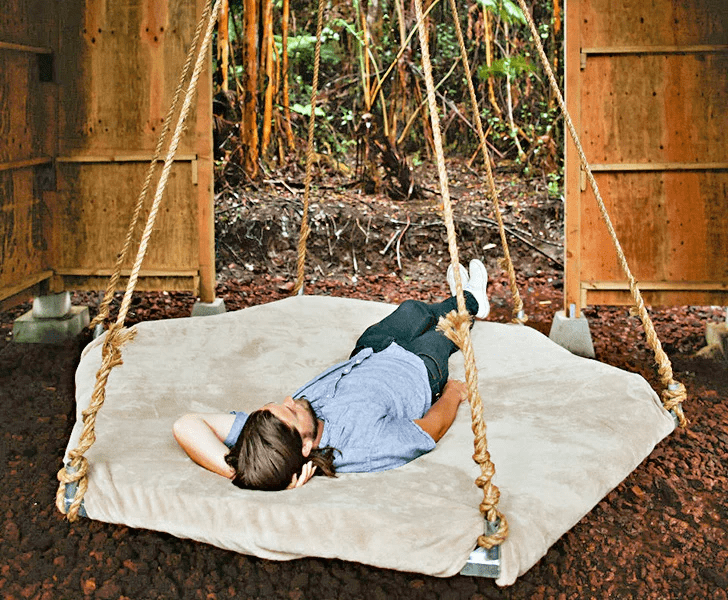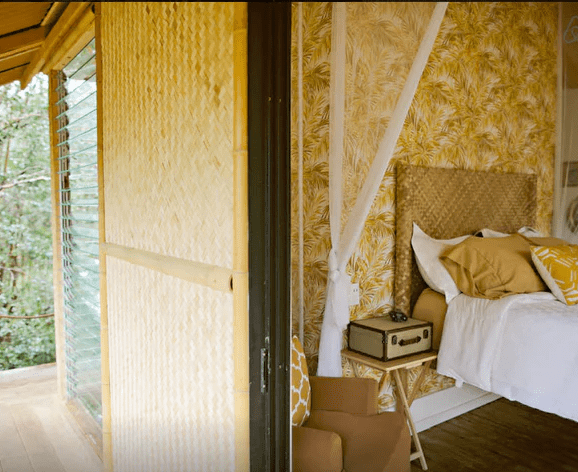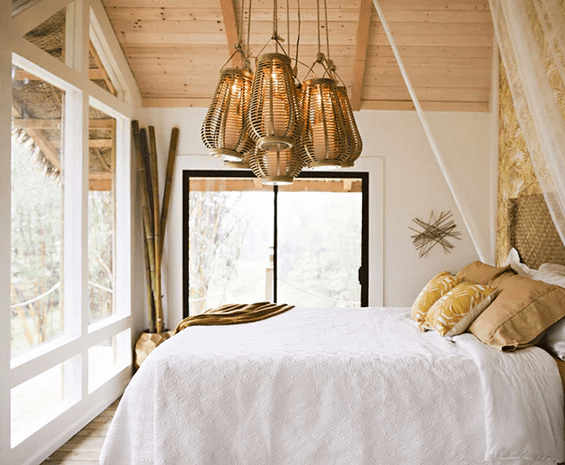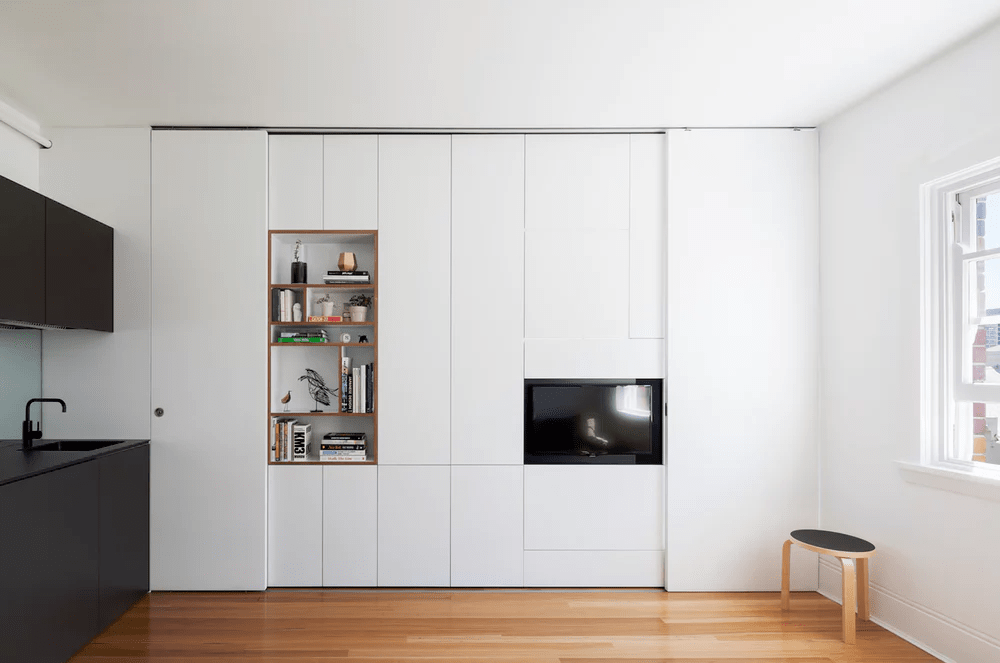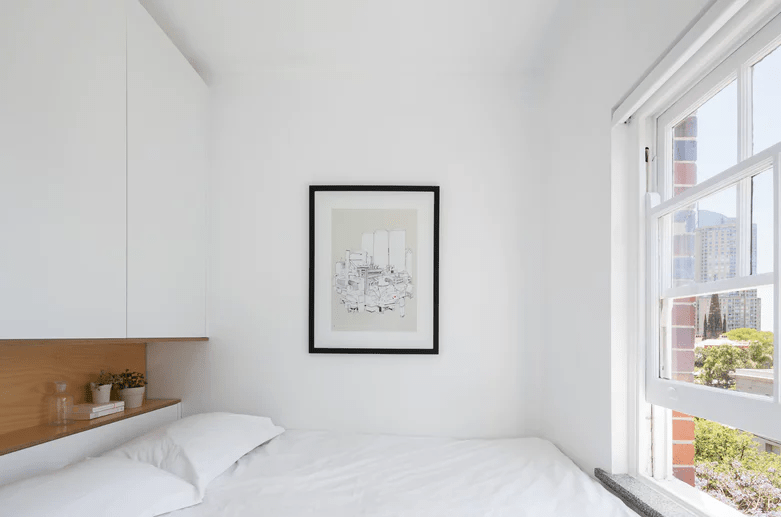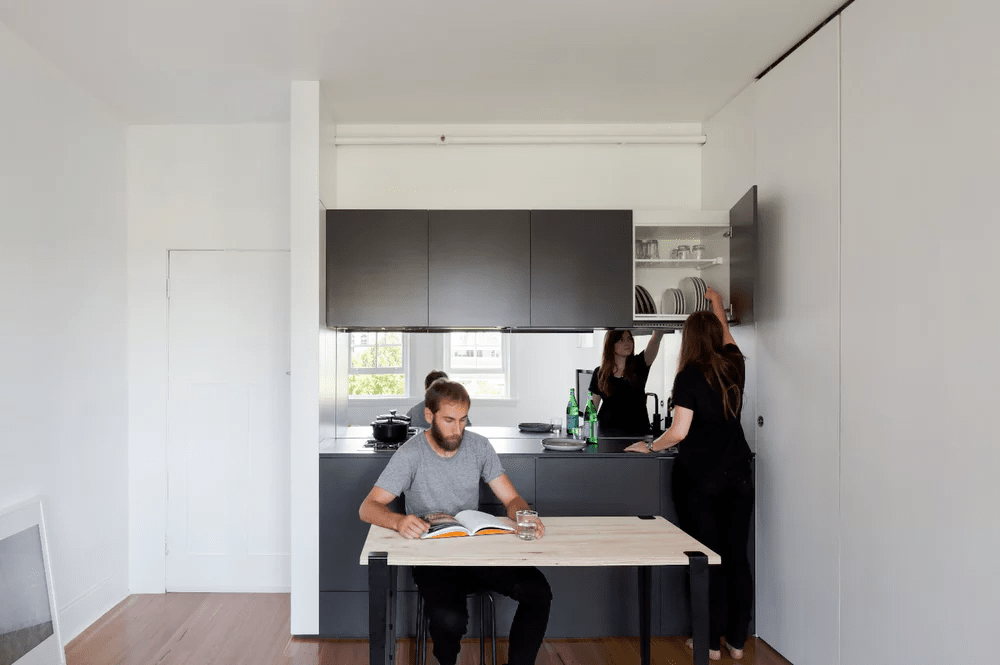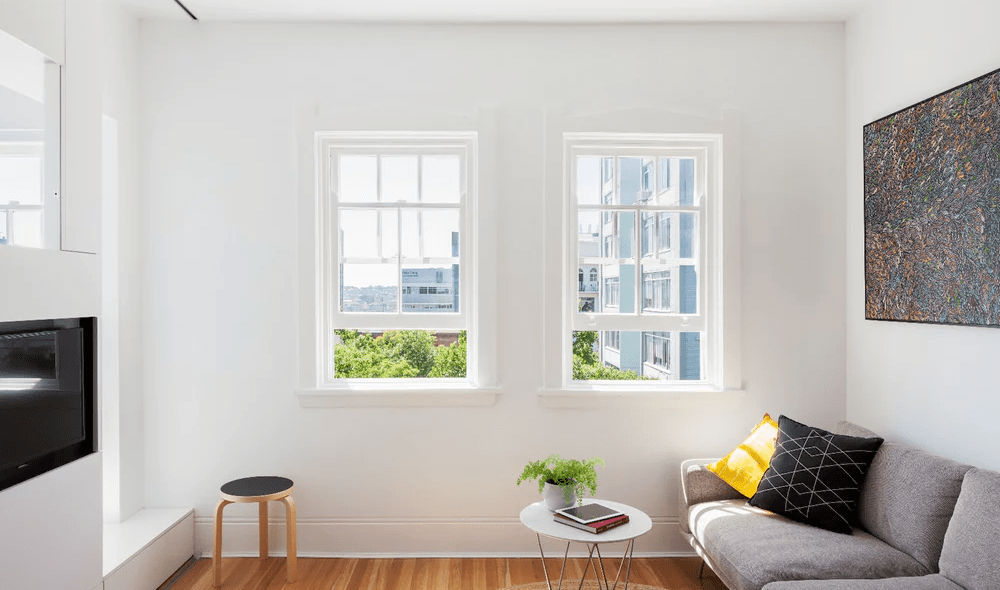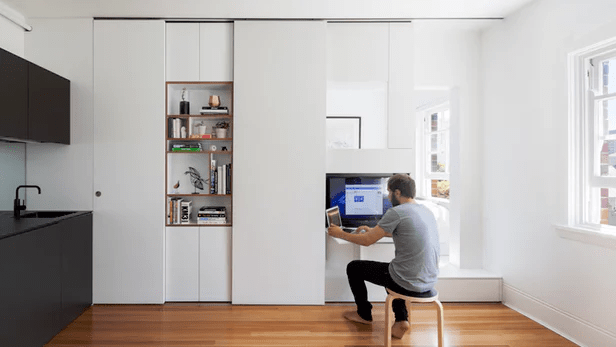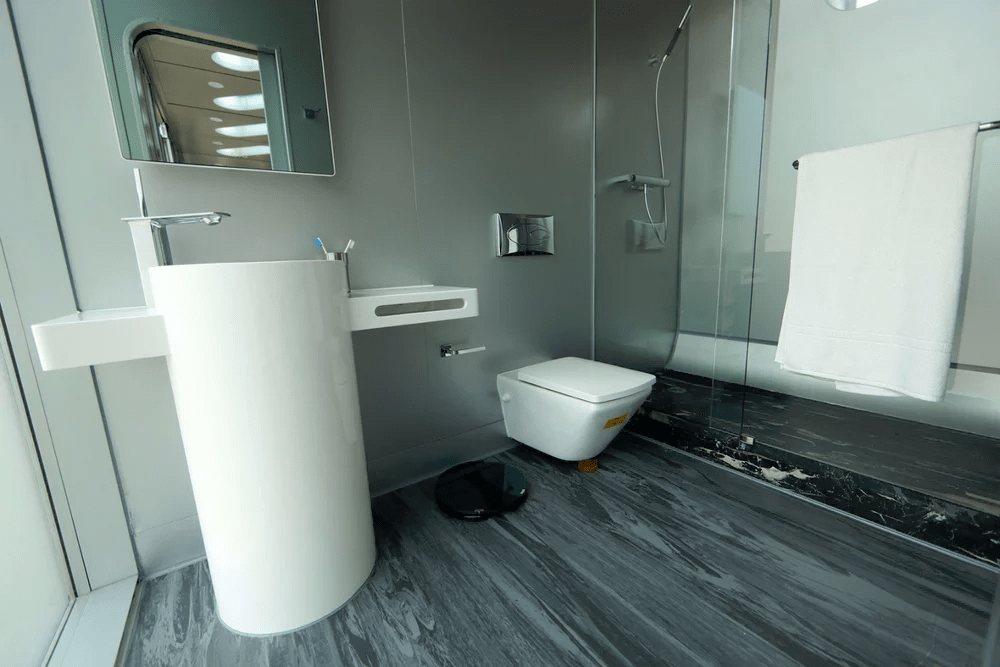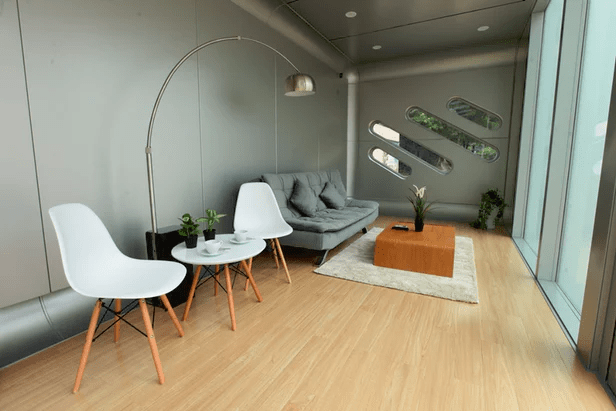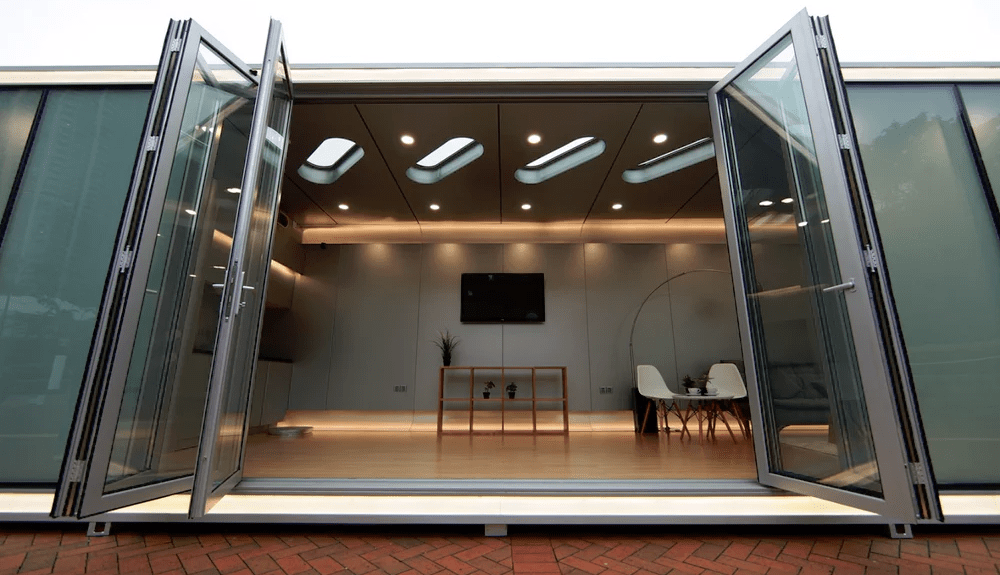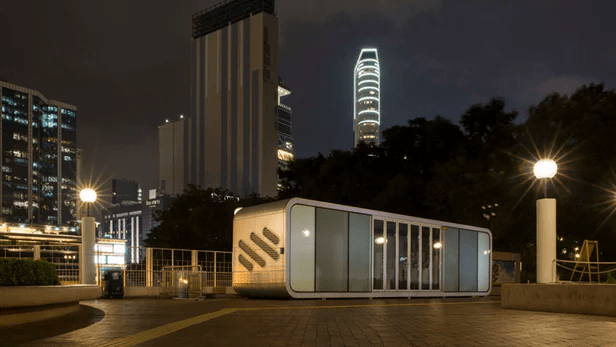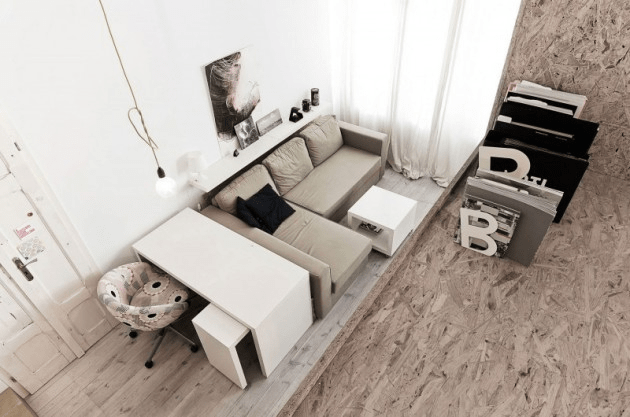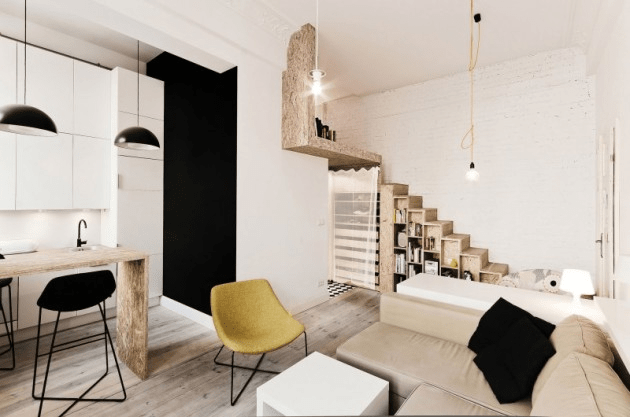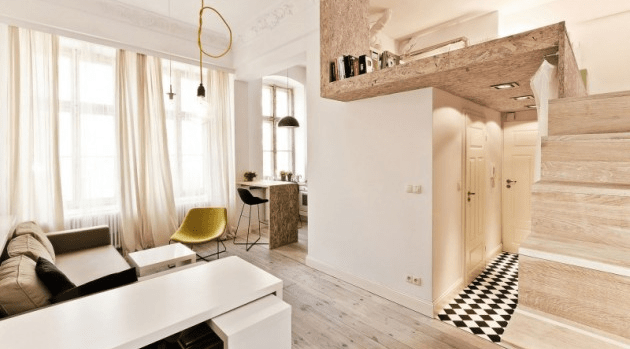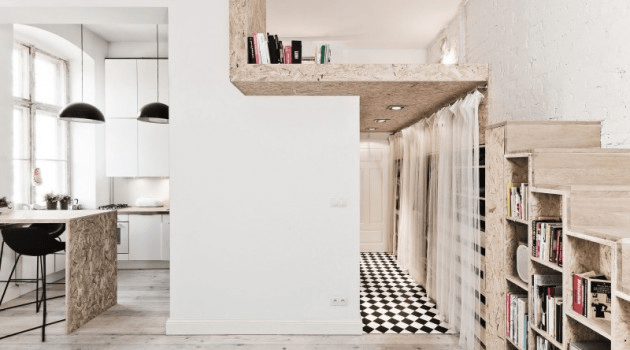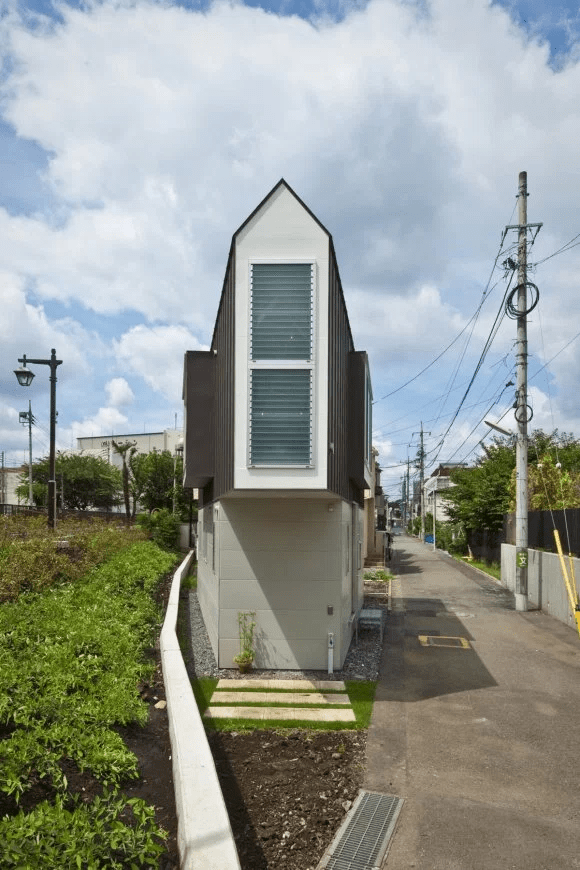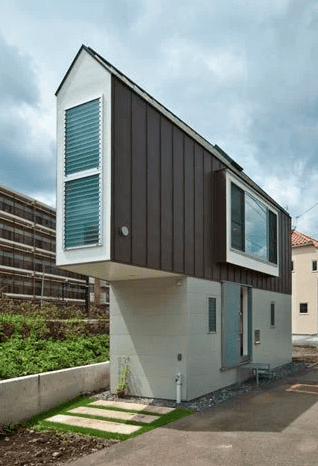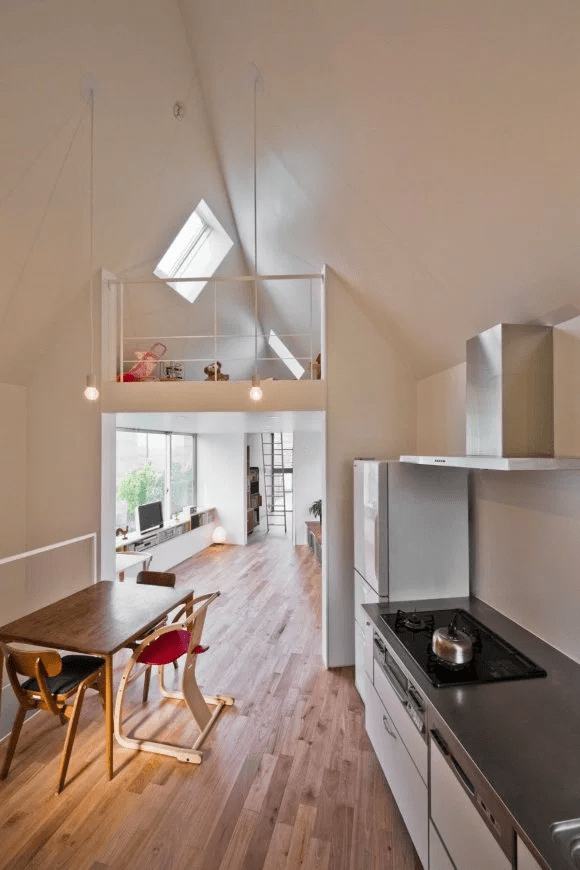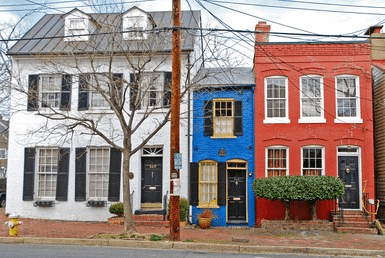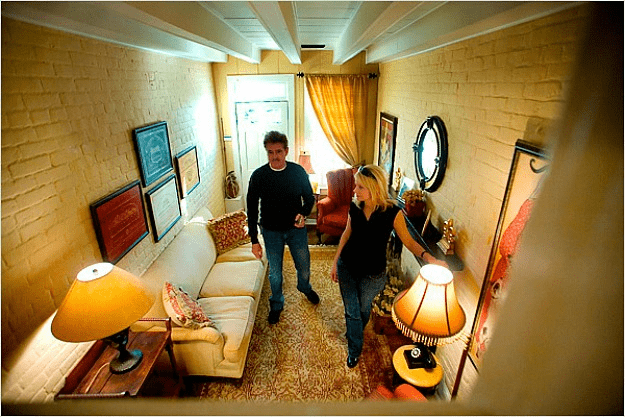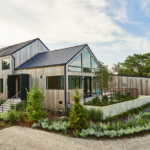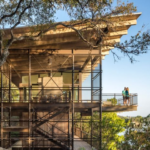Last updated on August 28th, 2024 at 12:57 am
BIG Reasons to Live small
It seems that tiny houses are becoming more and more popular these days. From tiny cottages on wheels, or mini brick and mortar homes – these homes come in all shapes and… well, not too many sizes. As well as an increase in tiny home architects and builders across the US and elsewhere, there are now festivals, national organizations, and even television shows dedicated to tiny living.
| Some of the world’s top architects are even getting in on the tiny house trend. Italian architect Renzo Piano designed this 65 square meter home that includes a kitchenette, toilet and shower, pullout sofa bed, folding table, and even storage space. Named Diogene, the micro-home is entirely self-sufficient and can easily be transported anywhere. (Photo Credit: Ariel Huber for Vitra) |
What is a Tiny Home?
TIny homes are typically anywhere from 100 (or less!) square feet up to 400 or 500 square feet. They can be mobile or stationary. While many are built on top of towable trailers, an increasing number are being built stationary on foundations, much the same as a regular house, but smaller. Some tiny homes are built on property behind existing homes, whereas others are building tiny homes on large plots of land to take advantage of ample outdoor space. And increasingly, tiny homes are gaining in popularity in urban areas! The tiny home living has even extended to apartments. In crowded and expensive cities such as New York, San Francisco, and as far as Hong Kong, tiny living provides a way for individuals and families to live comfortably within limited space and financial constraints.
And although the tiny home movement is clearly picking up steam in 2017, the roots of the movement can actually be found much early, such as in a 1973 Lloyd Kahn publication “Shelter,” which celebrated alternative architecture, and Lester Walker’s 1987 “Tiny Houses,” that actually provided readers with plans for 44 small and affordable homes. These homes were generally simple and non-luxurious compared to many of the tiny homes that can be found today.
Why a Tiny Home?
There are a myriad of explanations for the tiny home movement. ‘Freedom’ is one word we hear over and over – financial freedom, emotional freedom, and freedom to travel. For many, tiny homes provide one answer to the environmental concerns of the future. For some, tiny homes are a solution to debt and mortgages. For others, tiny homes are appealing because they allow their owners the opportunity to travel. And for still others, it is some combination of these explanations and others.
“It’s definitely a lot of work, but the payoff is knowing you have a small environmental footprint, that you’re living a simple life, and I wake up in the woods every day and it’s beautiful and peaceful. Not to mention my house is paid off, so I don’t have any mortgage.” – Brad Allain, tiny home owner in MA
Freedom to move
Many tiny home owners emphasize how their tiny home provide them with the flexibility to travel. For those with tiny homes on wheels – they can simply hitch up their home and move it to a new place. They can wake up looking over the mountains, and fall asleep under the stars next to the ocean. Whether you are changing states for a new job, or just want to hit the road to explore – you can bring your home with you.
Photos: TinyHouseDesign | HGTV | CountryLiving | Alaska Tiny Home | TinyHouseTalk
Economic Freedom
For many, tiny homes offer the opportunity to take on less financial risk and have more economic freedom. For most Americans, one-third to one-half of their income goes to keeping a roof over their head. The average new American home in 2016 cost about $290,000 and even pre-owned home sales had a median price of $208,500 in 2014. Compare that to the $30,000 to $70,000 a tiny house can cost, according to the trade publication The Tiny Life. Some thrifty do-it-yourselfers build their own for even less. That’s a bargain for achieving the so-called American Dream!
Opting for the tiny home ownership route, you won’t just save on a mortgage. You are also saving on utility bills, property taxes, and costly home repairs. According to the Integrating Transportation and Community Planning program, 89% of tiny house owners have less credit card debt than the average American; 65% have none at all. Plus, tiny home owners have about 55% more savings in the bank.
Sizing Down
The 100 – 500 square feet of a tiny home is quite a drop from the typical American home built in 2016, which stands at sprawling 2,600 square feet. Of course, this loss of square footage requires tiny home owners to scale down their possessions and style of living. But this is indeed part of the appeal.
Living minimally and being conscious about what we own is becoming more popular. Tiny homes force their owners to consider what is and is not important and necessary and scale down their possessions. Ridding your home of things you don’t need will reduce clutter – physically and mentally. Plus, being more restrained in your buying habits (where will you store something?) will help save you even more money.
Going Green
Many tiny homes are environmentally friendly and reducing your carbon footprint is one very compelling reason to join the movement. The construction itself creates less waste and the final homes require considerably less resources. The standard home produces about 28,000 pounds of CO2 annually for electricity, heating, and cooling. Compare that to a tiny home, which produces only about 2,000 pounds.
But that’s not all. Lots of tiny homes are off the grid completely (which has the added benefit of reducing or even eliminating your utility bills). There are countless green features that can be built into a tiny home – composting toilets, solar panels, rainwater harvesting tools, eco-kettles, and even a green roof!
How To Build a Tiny Home
Does everything we just talked about sound appealing to you? Think you want to take the plunge and ‘live tiny’? You may be wondering how to get started. Here are a few different options for how to get your own tiny house.
The first option is to do it yourself!
You may be surprised what you are capable of. There are no shortage of stories of ordinary people creating beautiful tiny homes with their own two hands.
Purchase prepared plans or draw up your own. Many tiny home architects and builders sell plans online. For example, Washington DC-based Foundry Architects recently made plans for their micro home – The Minim House – available for $495. Plus, Houseplans.com has 90+ tiny-house plans available and The Tiny Life has a helpful guide to finding the right plans based on your needs and budget.
And blogs are one of the best resources for building a tiny home. To get started, check out Build TIny, Pad Tiny Homes, and The Tiny Life. And many bloggers tracked their building (and living) experiences and are happy to share valuable advice. Lastly, reach out to organizations such as the American Tiny House Association or a local tiny home enthusiast group for guidance.
(Photo courtesy of TinyHouseTalk.com)
| Many tiny homes are built by their owners. This 140-square-foot house was designed and built over seven months by Chris and Malissa Tack, a young artist couple. This labor of love served as their primary residence for four years and allowed them to stay in their own home — even when moving from coast to coast. Known as the Tiny Tack House, it cost under $20,000 in materials, including salvaged and sustainably-sourced wood. (Photo Credit: Chris and Malissa Tack) |
Not up to the challenge of building a tiny home? Hire someone.
Custom Home Magazine has compiled a list of the best tiny home builders by state. Keep in mind that many companies will ship out of state, so do not feel limited by geography!
There’s no lack of creative tiny homes for sale. Many builders have finished tiny homes available or you can personalize one of their standard models. For example, Tiny Mountain Houses has 21 models of tiny homes already available in all different sizes and styles. Other companies, like Handcrafted Movement, build completely unique tiny homes and sells them. You can also check sites like eBay for used tiny homes.
If you want a completely customized tiny home, you are not out of luck. Many tiny home builders will work directly with you to draw up plans that match your space and style wishes. For example, Tiny Heirloom of Oregon City has many personalizable models, but also happily takes commissions for custom homes. Or, if you have the skills, you can draw up your own plans and hire a builder to construct it.
| Handcrafted Movement, founded by Matt Impola in Battle Ground, Washington, creates beautiful, one-of-a-kind tiny homes and then sells them online. (Photos courtesy of Handcrafted Movement) |
| Tiny Mountain Houses sells 21 models of tiny homes – all named after impressive mountain ranges. (Photos courtesy of Tiny Mountain Homes) |
| Engineers Tina and Luke Orlando spent 18 months designing their 204 square foot home and then hired Daystar Tiny Homes to construct it. Built on a three-axle trailer, this tiny home is pet-friendly and was designed to run off the grid with a rainwater collection system, a roof-based solar array, and a battery backup. (Photo Credit: Patrick Treadway Photography) |
Things to Consider for Tiny Home Living
Similar to buying or building a standard size home, there are many things you must consider first. Of course there are the obvious questions: How many people need to fit? What is your budget? Is this for full-time living or a weekend retreat? There are also more specific questions. Below are some of the most advisable questions to consider at the start.
What spaces do you need in your tiny home?
Given the reduced living space, everything that goes into a tiny home must be meticulously planned and typically has more than one purpose. Are you a freelancer who needs space to work at home? Do you have hobbies such as rock-climbing that require extra storage? Do you have pets that need to be kenneled? Do you love cooking and need significant amenities in the kitchen? Ask yourself these questions you start looking at tiny homes. Because of the tight floor plans, it might be hard to significantly adjust a home to your needs once it is complete.
On or off the grid?
A great benefit of tiny homes is that they reduce a home’s carbon footprint. Because of the smaller space, less utilities such as electricity and water are used. It is therefore a viable option to build a tiny home that is completely off the grid. That is, you can design your tiny home to not need traditional utility hookups. Solar power is one option for electricity and rainwater collection can provide all the water you need. If you decide to build an off the grid tiny home, talk to your home builder for what options are suitable for your needs.
| For many, the appeal of a tiny home is to reduce one’s carbon footprint. On the left is a home by New York fashion stylist and interior designer Scott Newkirk. Newkirk’s 300 square foot rustic cabin in Yulan, NY has no running water or electricity and is made of recovered and salvaged materials. On the right is The Greenmoxie Tiny Home – a sustainable, off-grid, and eco-friendly mobile home. The Greenmoxie includes a roof-based solar array, rainwater collection system, and a grey water recycling system. (Photos courtesy of Humble-Homes and Greenmoxie) |
Where are you going to use your tiny home?
Where and how you want to use your tiny home will make a huge difference. Of course, if you want to use your home to travel, you will need one on a trailer. Beyond that, local laws and ordinances will likely affect where you can live and whether or not your home can be mobile or stationary.
Tiny homes are in a legal gray area in many municipalities. Stationery tiny homes may not be legal in a given city as they have to meet local building code and zoning regulations. And unless built with that location in mind, it may not meet fire code, have the required utility hookups, or meet minimum square footage requirements for single-family homes.
People in these areas may be able to get around this by building a home on wheels, which is not subject to these requirements. However, in some municipalities you may be prohibited from living in a mobile tiny home on your property. Add to the confusion that many local and state governments cannot decide how to classify tiny homes – are they RVs, mobile homes, or backyard cottages?
For these reasons, it is important to do your research early on to avoid unnecessary complications later on. The American Tiny House Association is a great resource to find relevant regulations.
| Some tiny homes, like ‘Eagle Point’ (pictured above), are stationary. Eagle Point, designed by Prentiss Architects, is a remote cabin with a living roof on San Juan Island, Washington. (Photos courtesy of Prentiss Architects) | Often, mobile tiny homes can be parked at RV and mobile home parks or campgrounds. Plus, there are tiny home communities popping up all over the United States and Canada, such as the urban Boneyard Studios tiny house community in our Washington, DC (pictured below) and Zen Cottages’ ‘Echo Tiny Home Community’ on an organic farm outside San Diego. (Photos courtesy of Boneyard Studios Tiny Home Community) |
Creative Uses for Tiny Homes
TIny homes are not just for personal use by young individuals. People of all ages are using these tiny homes in many ways. It may be an appealing hunting cabin or fun way to take the whole family camping. Older individuals may look at tiny homes as a retirement option and young couples may see it as a way to visit the in-laws while still having the privacy of their own home. It could be a writer’s retreat, a mobile office, or a backyard guest house. As more people in more sectors become aware of benefits of tiny homes, they are appearing in more and more creative ways.
Affordable Housing
One such use of tiny homes is as an answer to the affordable housing crisis. In Lawrence, MA, a densely packed old industrial town in northeastern Massachusetts with a shocking 28.5% poverty rate, high unemployment and homelessness, that is exactly what young entrepreneur Franallen Acosta has proposed. And he is not alone – similar proposals can be found in Chicago, where Tracy Baim has advocated for tiny homes to house homeless veterans, children, and the elderly.
Success for this idea can be found in Memphis where the Metamorphosis Project is already providing transitional housing for LGBTQ youth in homes built from shipping containers and in Seattle, where the Low Income Housing Institute is using tiny homes costing $6,000 each as a crisis solution to homelessness.
Student Housing
Tiny houses may also offer students an affordable and practical housing option. Especially for schools located in expensive and crowded urban areas, tiny homes can be considerably cheaper than an apartment. Elizabeth Turnbull, for example, a graduate student of Environmental Studies at Yale University, found her options for typical student housing lacking. She therefore built her own tiny home to live in while she completed her studies. This not only saved her a considerable amount of money while still remaining close to campus, but let her experiment with ecological-friendly living and building in a hands on way.
Retreats / Hotels
Tiny homes have also been popping up as hotel and retreat options. In addition to finding stand alone tiny homes for rent on sites like Airbnb, there are multiple villages of rentable tiny homes that let you and your family test drive tiny home living in a beautiful location. Caravan Tiny House Hotel in Portland, Oregon, for example, is touted as the first tiny house hotel, and in the dense forest outside Mt. Hood is the Tiny Home Village that lets you rent a tiny home with great access to outdoor activities.
Photos: Caravan Tiny House Hotel / Mt. Hood Tiny Home Village
Tiny Home Examples
The Brick House 1908, originally a laundry boiler room, is a great example of making the most out of any available space. This chic tiny home is a full serve guest apartment taking up approximately 93 square feet. On the first floor is a full kitchen and living room, and the second floor hold a small square bathroom connected by a glass landing to a bedroom loft. (Photos courtesy of Azevedo Design Inc.)
The Koda, by Estonia firm Kodasema, is a a 284 square foot modern concrete micro-home built in prefabricated sections. It doesn’t need foundations, and can be assembled in about a day anywhere the ground is flat enough. High ceilings give the illusion of roominess in this impressively designed two-story home, which includes a living room, kitchen, bathroom, bedroom, and laundry room. The Koda can be purchased started at roughly $130,000 and is available in the UK and parts of mainland Europe. (Photo Credit: Tõnu Tunnel)
In Hawaii, designer and dressmaker Kristie Wolfe recently completely her own 97 square foot off-grid tiny home. Built as a sort of treehouse, Wolfe took full advantage of the indoor/outdoor living offered by the island’s climate. The tiny home cost around $11,000 to build and took three months to construct. It is raised 15 off the ground on stilts and contains a large bedroom, small bathroom, and a useable kitchen area inside. The home has a wooden wraparound porch offering stunning views of the dense rainforest near Volcano National Park. (Photo Credit: Kristie Wolfe)
Australian architect Brad Swartz transformed a 290 square foot apartment in in Darlinghurst, Sydney into a multi-functional home. He won the 2015 Houses Awards for Best Apartment or Unit for this project, which cost about $39,000 to complete. The tiny apartment includes a double bedroom and open living with a European kitchen and laundry, bathroom, storage, and multi-purpose zones. Everyday elements are hidden from view to give the illusion of more interior space, and a multi-purpose wall conceals the entrance to the bedroom and bathroom, and holds a bookshelf, kitchen pantry, vertical wine rack, and a fold down deck. His design uses clean lines, natural light, a restrained material palette and carefully placed mirrors to exaggerate the feeling of spaciousness. (Photo Credit: Katherine Lu)
The Alpod, designed by James Law Cybertecture in partnership with AluHouse and Arup, is a response to urban housing problems. The idea is to give people an inexpensive way to choose how and where they want to live within a city. James Law, Chairman and CEO of James Law Cybertecture. says:”We believe that a city of the future will be more intelligent and more flexible, making people have better lives in the city…We will create this by making a new kind of architecture – an architecture that blends technology and innovation together, creating a greener environment for everyone.” The aluminium Alpod has 480 square feet with an open living space, fitted kitchen and bathroom, and sliding glazed windows. Alpods are easy to transport and are stackable, and could be used to create a new kind of housing tower. (Photo Credit: Alpod)
3XA Design Studios designed a genius 316 square foot apartment in Wroclaw, Poland that contains all the amenities one needs, plus some. A ‘semi-mezzanine’ level was built to house a bed, which increasing the useable space of the small apartment. The apartment embraces open living, with a shared kitchen and dining space. The stairs to the bedroom loft are built as a bookcase for additional, and beautiful, storage. (Photo Credit: S.Zajaczkowski)
This tiny home in Japan took advantage of a small piece of land in a big way. Making the most of an extremely narrow triangular plot of land between a road and a river embankment, the Hori no Uchi takes up just 27.9 square meters. The ground floor is a snug sleeping quarters and the second floor is an open plan communal area with a small loft for children to play in. (Photos: HomeDesign.com)
This tiny home in Alexandria, Virginia is nicknamed the ‘Spite House’ and was built in 1830, long before tiny living was trendy. The house is 7 feet wide, about 25 feet deep, two stories tall and contains a total of 325 square feet. Although originally built by the owner of one of the adjacent homes in order to keep horse-drawn wagons and loiterers out of his alley, this unique and historic tiny home has now had several owners over the years , including those who have lived in it full time. (Photo Credit: Adam Fagen and The New York TImes )

